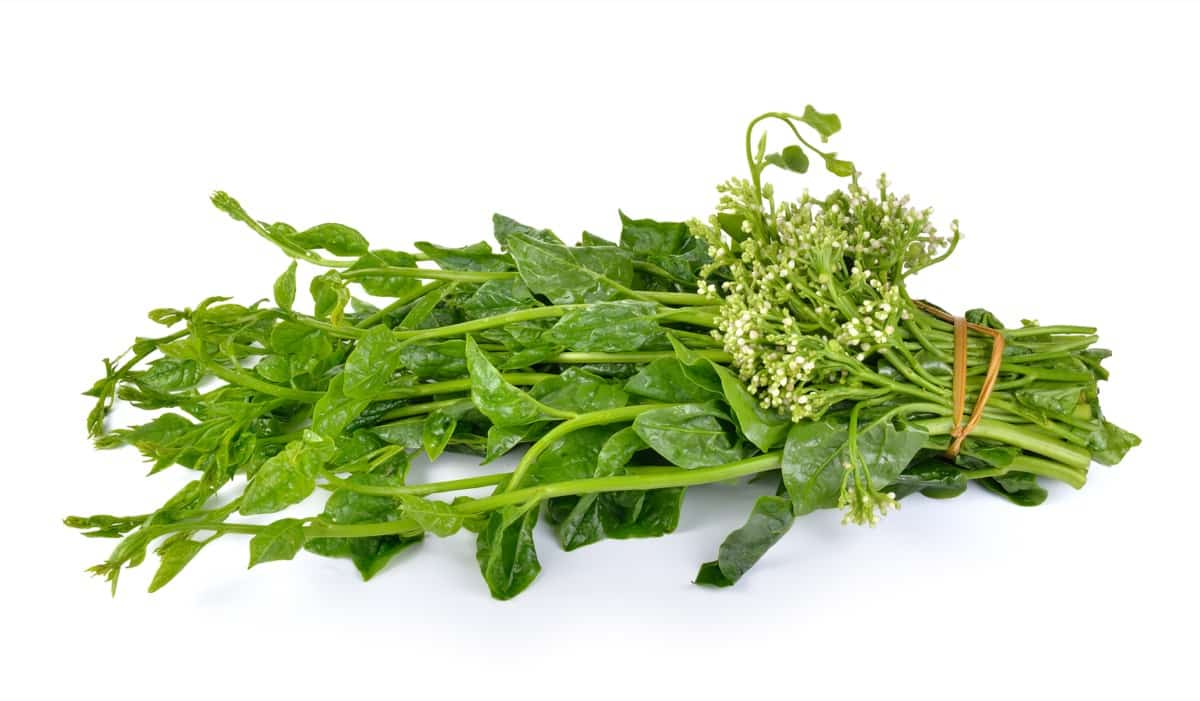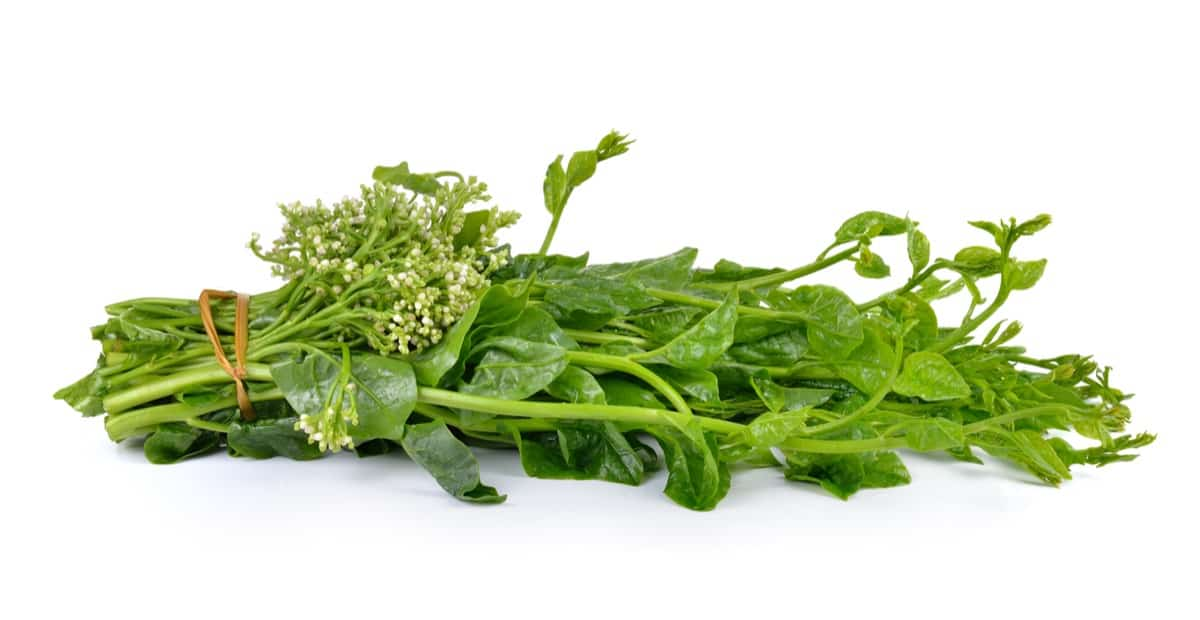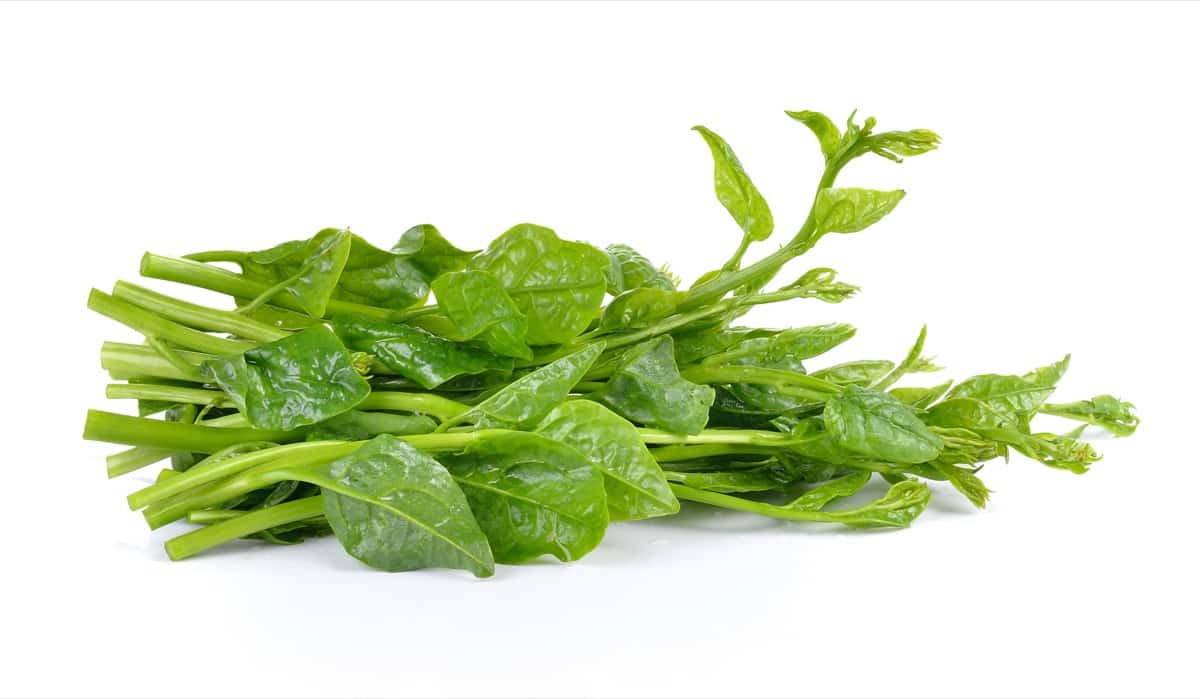Malabar spinach, also called Ceylon spinach, Indian spinach, vine spinach, and climbing spinach, is a heat-tolerant green with succulent, large leaves that are delicious raw, and cooked. The climbing habit of its growth means that it takes up a very small amount of greenhouse space. Thanks to its prolific production, you can add fresh greens to salads, stews, sautés, stir-fries, smoothies, and soups all summer.

How to Grow Malabar/Ceylon Spinach in Greenhouse
Malabar Spinach Varieties
There are two varieties of Malabar spinach: Basella alba and Basella rubra. In contrast to Basella alba’s white flowers and green vines, Basella rubra’s purple and red vines are characteristic of the Basella rubra variety. This plant has two varieties, both of which produce dark purple berries and bloom throughout the summer.
Temperature and Humidity Requirements for Growing Malabar Spinach in Greenhouse
Due to its tropical origin, Malabar spinach is highly sensitive to frost. Not only will it die in cold temperatures, but it also needs heat to grow. You will unlikely see much growth at daytime temperatures below 26°C and at nighttime temperatures below 15.5°C. For the plant to thrive, the temperature must be higher than 32°C.
Light Requirements for Growing Malabar Spinach in Greenhouse
Malabar spinach grows well in full sunlight and tolerates partial shade. Light or spotted shade may increase the leaf size and make them more succulent.
Soil Requirements for Growing Malabar Spinach in Greenhouse
Various soils can be used to grow Malabar spinach, as it is not fussy about soil requirements. A well-draining, fertile, sandy loam high in organic matter is ideal, but it can also tolerate damp soil if it is not soggy.
How To Grow Malabar Spinach From Seed in Greenhouse
- In Malabar spinach seeds, the seed coat is quite hard. You can improve germination rates by scarifying each seed repeatedly with sandpaper or a metal file.
- Alternatively, soak the seeds in water for 24 hours before planting to soften their tough coat.
- Prepare a seed starting tray and fill each cell with potting mix. For Malabar spinach, a potting mix consisting of 50% garden soil, 25% cocopeat, and 25% organic compost is ideal.
- Under grow lights, sow seeds indoors at a rate of one to two seeds per nursery cell pack or peat pellet.
- Cover the holes evenly with potting mix, ensuring everything is covered evenly. Ensure that it is thoroughly sprayed with water.
- Increase the soil temperature by 10 degrees over room temperature with a seedling heat mat.
- It takes a long time for Malabar spinach seeds to germinate. Seeds may take up to three weeks to germinate, so be patient.
- When the seedlings emerge, remove the heat mat and run the lights for 16 to 18 hours daily.
- You should plant your seedlings about two feet apart in a garden bed or container. It takes two to three plants in one area to cover a large trellis area with Malabar spinach.
- Water the young plants regularly until they are ready to be hardened off four to five weeks later.
In case you missed it: How to Grow Spinach in Greenhouse: A Step-by-Step Guide for Seed to Harvest

- About three weeks after your last frost, they are ready for transplanting into the greenhouse bed. Keep in mind not to put them out too early. Moving the plants into the garden requires soil between 18°C and 24°C.
- During transplanting, Malabar spinach plants do not like their roots disturbed. The seeds of Malabar spinach can be sown directly in the garden. This is the best option if you grow in a warm climate with a long growing season.
- Consider attaching a climbing aid when planting climbing spinach. You can support your edible vines with taut wires, ropes, trellises, or climbing arches – even with a wicker tipi.
Watering Requirements for Growing Malabar Spinach in Greenhouse
Malabar spinach needs water to grow. Dry conditions can cause it to flower prematurely, resulting in bitter leaves. Watering is required in the absence of frequent and ample rainfall. On the other hand, excessive precipitation is not usually a problem unless the soil is poorly drained. Keeping the leaves dry and avoiding overhead watering are the best practices to avoid these diseases.
Fertilizing Requirements for Growing Malabar Spinach in Greenhouse
Unless you are living in a tropical climate where this plant is perennial, vines will consume a lot of energy to produce many leaves quickly. Harvesting regularly encourages the plant to produce even more leaves, which requires adequate nutrition in the soil. Soil with a high organic matter content is essential.
Compost should be added to your garden every year in a layer of two to three inches. During the growing season, you can supplement with a granular organic high-nitrogen fertilizer, such as bat guano or Burpee Organics. To support healthy root growth and overall resilience, fertilizer should contain moderate amounts of phosphorous and potassium.
Pruning Greenhouse Grown Malabar Spinach
Malabar spinach can become densely entangled like most of the vines. Once it takes off, regular harvesting might not be enough to maintain its shape, and additional pruning of leaves and fleshy stems might be required. A vine that is not pruned can reach a length of 30 feet. You can encourage the vines to branch out by pinching the tips.
Harvesting Greenhouse Grown Malabar Spinach
As early as 50 days after planting or when you see a strong main stem, Malabar spinach is ready to harvest. Regardless of size or shape, leaves can be eaten at any stage, but smaller leaves are more tender and mild. The berries are ready to be harvested as soon as they turn dark purple. The plant’s leaves and shoots can be harvested when it reaches a height of a few feet. Harvest a modest amount of leaves when the plants reach around 2 feet tall.
When they reach three to four feet tall, increase the number of leaves harvested. Be sure to leave some vegetation on the stems to help photosynthesize and support future vine and leaf growth. When harvesting the heart-shaped leaves, use your thumb and forefinger to pinch each one off at the vine’s base. Some people may prefer to harvest Malabar spinach leaves with a knife or pruners with needle-nose tips.
In case you missed it: Breadfruit Farming and Cultivation Practices in India

Conclusion
In hot weather, spinach does not grow well, so many people like to eat it throughout the year. Spinach substitutes are grown from a variety of plants. Throughout the world, Malabar spinach, Basella alba, is a popular green leafy vegetable. It grows eaquicklyn greenhouses during the summer as an annual during the heat of tropical Asia, likely India, Sri Lanka, or Indonesia.
- Feed Your Flock for Less: Top 10 Tips to Save on Chicken Feed
- Ultimate Guide to Ossabaw Island Hog: Breeding, Raising, Diet, and Care
- Hatching Answers: The Top 10 Reasons Your Chickens Aren’t Laying Eggs
- Eggs and Economics: Breaking Down the Cost of Raising Backyard Chickens
- Defend Your Greens: Proven Methods to Keep Iguanas Out of Your Garden
- Ultimate Guide to Cinnamon Queen Chicken: A Comprehensive Guide for Beginners
- Ultimate Guide to California Tan Chicken: Breeding, Raising, Diet, Egg-Production and Care
- Ultimate Guide to Marsh Daisy Chicken: Breeding, Raising, Diet, and Care
- 10 Types of Chicken Farming Businesses You Can Start for Profits